Managing engineering resources can be challenging. Skilled engineers are in high demand, projects have tight deadlines, and keeping track of who's available when is a constant challenge.
You know what's making it harder? Excel spreadsheets or disconnected software your team has relied on for years. That's why forward-thinking engineering firms are investing in dedicated resource planning software.
In this guide, we'll walk you through everything you need to know about choosing the right engineering resource planning software for your business.
Why engineering needs specialised resource planning software
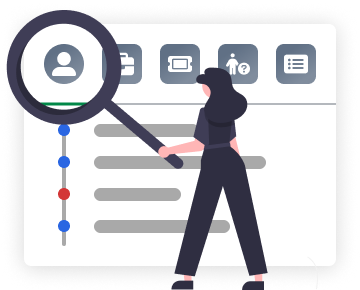
Engineering firms face resource management challenges that generic basic tools can't handle. The technical complexity of projects, diverse skill requirements, and the high cost of talent misallocation all demand a more sophisticated approach.
Think about your current situation. How many times have you discovered a senior engineer was working on tasks that could have been handled by a junior team member? Or scrambled to find a specialist with a specific certification when a client project suddenly changed scope?
These everyday challenges have real financial consequences. Engineering talent is expensive, and every hour spent on the wrong task directly impacts your bottom line.
But here's the interesting part:
When engineering firms implement specialised resource planning software, they typically see utilisation improvements of 10-15%. That could translate to hundreds of thousands in additional billable hours annually.
Naturally, every engineering firm has its own specific needs. Naval architects require different skills tracking than civil engineers or automotive designers. That's why generic project management tools often fall short - they lack the granularity needed for technical skills management and engineering-specific workflows.
So what's the solution? You need resource planning software specifically designed to handle the complexities of engineering teams - from skill matrices and certifications to capacity planning and scenario modelling.
Key features to look for in engineering resource planning software
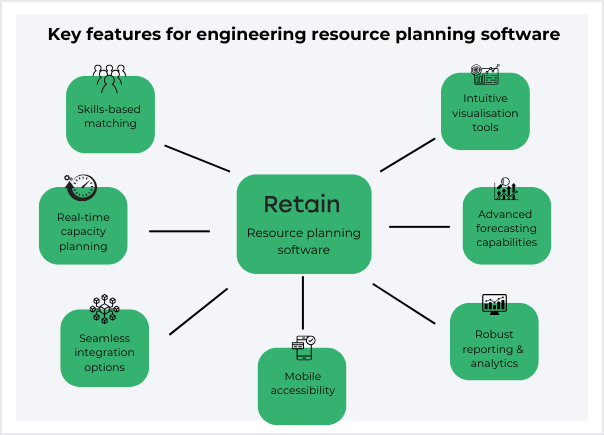
When choosing resource planning tools for your engineering firm, not all solutions are created equal. You'll want to focus on platforms that address the specific challenges engineers face daily.
1. Skills-based matching
Skills-based matching should be at the top of your list. Your ideal solution needs to track not just availability, but also technical specialisations, software proficiencies, certifications, and experience levels. This helps you quickly find the perfect structural engineer with five years of experience in bridge design who's certified in the latest modelling software.
Let me guess—you're currently maintaining this information across multiple systems or, worse yet, in your project managers' heads? That's exactly the problem the right software solves.
2. Intuitive visualisation tools
Visualisation tools are equally key. Look for intuitive interfaces that display resource allocation at a glance. Gantt-style views help project managers see who's working on what, while heat maps can identify periods of over or under-allocation.
3. Real-time capacity planning
The best systems offer real-time capacity planning that updates automatically as projects change. When your naval architecture project suddenly needs an additional three weeks, the system should instantly highlight the ripple effects on other projects and suggest available alternatives.
4. Advanced forecasting capabilities
Forecasting capabilities are another important feature. Engineering projects can run for months or even years, so you need tools that support long-range planning. Look for software that lets you model different scenarios—what if this project gets delayed? What if we win these three potential contracts? How many additional structural engineers would we need to hire?
5. Seamless integration options
Don't overlook integration capabilities, either. Your resource planning software should connect seamlessly with your existing tools—whether that's CAD systems, project management software, or finance platforms. This integration means no double-keying and ensures everyone works from the same information.
6. Mobile accessibility
Mobile accessibility is super important, especially for on-site engineers. The ability to update availability, log time, and check assignments from construction sites or client locations keeps projects moving forward without delays.
7. Easy reporting and analytics
Finally, reporting and analytics turn your resource data into actionable insights. Your software should provide clear metrics on utilisation rates, project profitability, and capacity forecasts that help drive strategic decisions about hiring, training, and business development.
The most effective engineering resource planning tools strike a balance between comprehensive features and usability. All the functionality in the world won't help if your team finds the software too cumbersome to use in their daily work.
Common implementation challenges (+ how to overcome them)
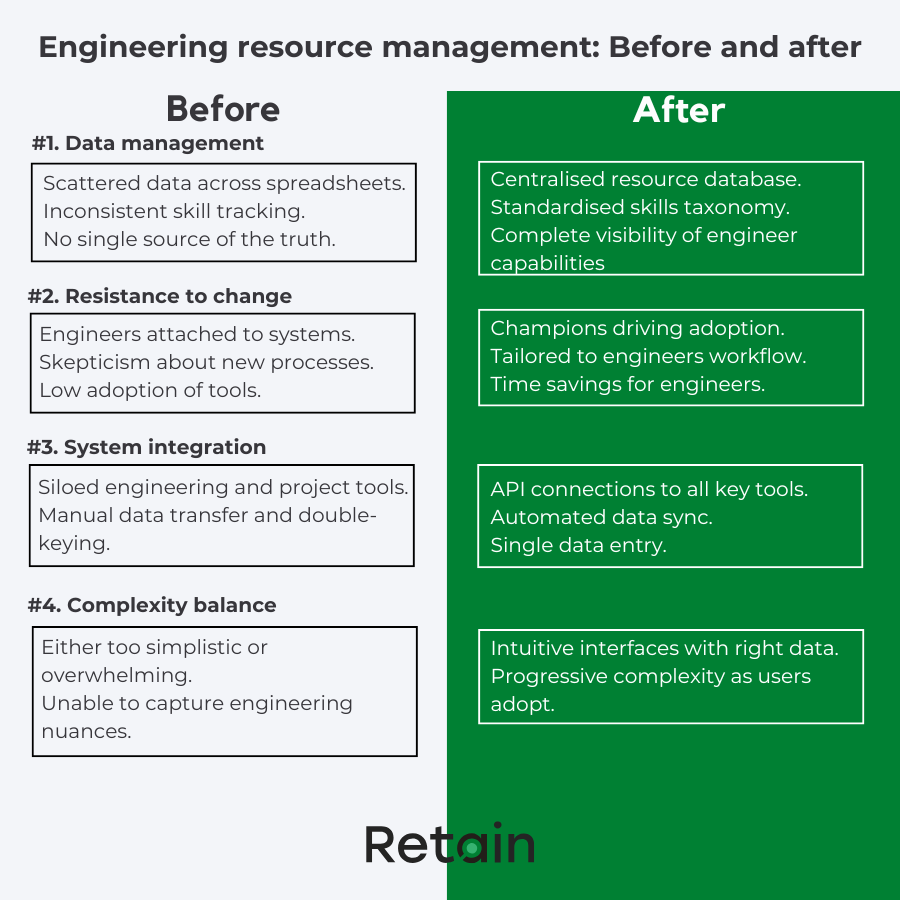
Let's face it—even with the best planning, implementing new software isn't always smooth sailing. Engineering firms face specific hurdles that can derail your implementation if not addressed proactively.
1. Data migration headaches
Moving from spreadsheets or legacy systems to dedicated resource planning software often means transferring years of historical data. Engineers' certifications, project histories, skill matrices—all this information needs to be accurately migrated.
So, before migration, it’s useful to audit your existing data and standardise formats. Consider a phased approach, starting with current projects and resources rather than attempting to migrate everything at once.
Continue reading: Outgrown Excel? Here’s how to move to a specialist resource management system
2. Resistance to new systems
Engineers are practical problem-solvers who value efficiency—but that doesn't mean they'll automatically embrace change. Technical professionals often develop their own systems for tracking work and may be reluctant to adopt new tools.
To overcome this, involve key engineers in the selection process, provide training, and share the tangible benefits specific to their daily challenges. Identify champions within each department who can help drive adoption and address concerns from their colleagues.
3. Integration with existing tools
Engineering environments typically use specialised software—from CAD systems to simulation tools, and project management platforms to financial systems. Your resource planning software needs to play nicely with these existing tools.
The solution? Prioritise integration capabilities during your selection process. Look for software with robust APIs and pre-built connectors to common engineering tools. Plan for testing integrations thoroughly before full rollout, and be prepared to develop custom integrations if necessary.
4. Balancing detail with usability
Engineering work often requires tracking highly specialised skills and certifications. You might be tempted to create extremely detailed skill matrices and resource profiles—but this can quickly become unwieldy.
The trick is to find the right balance. Start with the most critical skills and attributes, then gradually expand as users become comfortable with the system. Remember that perfect is the enemy of good—a system that's 80% comprehensive but actually used is far better than one that's 100% comprehensive but too complex for daily use.
By addressing these challenges head-on, you'll significantly increase your chances of a successful implementation. Naturally, every engineering firm is different, so tailor your approach to your organisation's specific culture and needs.
Continue reading: The importance of user experience in resource scheduling
Cost considerations and ROI analysis

When it comes to investing in resource planning software, engineering firms need to look beyond the initial price tag. Understanding the complete financial picture helps you make the best decision (and secure budget approval).
1. Pricing models explained
Most resource planning solutions offer different pricing structures, each with its own advantages:
Subscription (SaaS): Pay monthly or annually based on the number of users or resources managed. This model offers lower upfront costs and regular updates but may cost more over time.
Perpetual license: A one-time purchase plus annual maintenance fees. Higher initial investment but potentially lower long-term costs if you plan to use the software for many years.
Tiered pricing: Different feature sets at different price points. Allows you to start with basic functionality and upgrade as needed.
For engineering firms, subscription models often make sense initially as they allow you to test the software's effectiveness before making a larger commitment.
2. Hidden costs to consider
The sticker price rarely tells the whole story. Be sure to factor in:
Implementation services: Data migration, configuration, and customisation can add 20-50% to the base software cost.
Training expenses: Both initial and ongoing as new features are released or new staff join.
Integration costs: Connecting with existing engineering software may require additional development.
Hardware upgrades: Some systems may require upgraded infrastructure or cloud services.
Maintenance fees: For perpetual licenses, these typically run 15-20% of the initial purchase price annually.
3. Calculating Your Potential ROI
Now for the good news—properly implemented resource planning software typically delivers substantial returns. Here's how to calculate potential ROI.
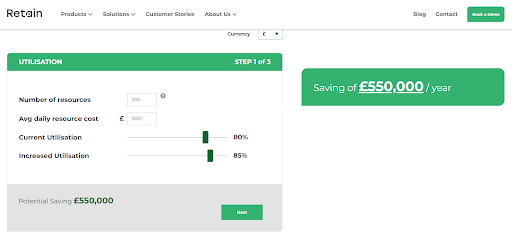
Related reading: How resource planning impacts ROI
4. Typical payback period
For most engineering firms, resource planning software pays for itself surprisingly quickly. Based on industry benchmarks, expect a payback period of:
- 3-6 months for firms with high billable rates and utilisation challenges
- 6-12 months for most mid-sized engineering operations
- 12-18 months for smaller firms or those with less mature processes
Of course, your mileage may vary. The more manual and inefficient your current processes, the faster you'll see returns.
By understanding both the costs and potential returns, you can build a compelling business case that focuses on value rather than just expenses. After all, resource planning software shouldn't be viewed as a cost center, but as a profit driver for your engineering firm.
How to choose the best resource planning software for engineers
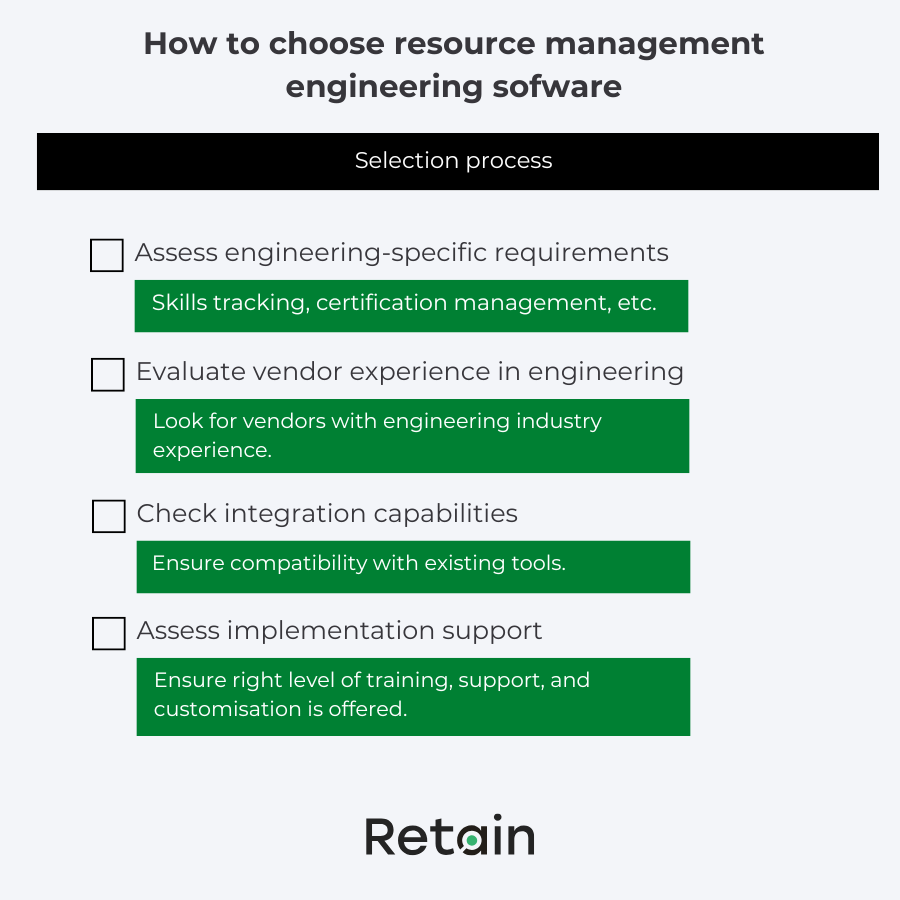
Choosing the right resource planning software for your engineering firm is an important decision with long-term implications. Beyond features and price, you need a solution that truly understands the unique needs of engineering teams.
1. Engineering-specific capabilities
Not all resource planning tools are created equal when it comes to supporting engineering work. Look specifically for:
Skill matrix complexity: Can the system handle the detailed technical skills and certifications unique to engineering disciplines?
Project-based allocation: Engineering projects often run for months or years with varying resource requirements throughout different phases. Does the software support this complexity?
Multi-disciplinary team management: Can it effectively coordinate resources across structural, electrical, mechanical and other engineering disciplines?
The best vendors will have engineering firms in their client portfolio and understand the specific challenges you face.
2. Key questions to ask potential vendors
When evaluating vendors, go beyond the standard demo and ask pointed questions like:
"Can you show me examples of how other engineering firms use your software?"
"How does your solution handle resource allocation for complex, multi-phase projects?"
"What's your approach to tracking technical certifications and ensuring they're current for project assignments?"
"How easy is it to model 'what-if' scenarios when bidding on new engineering contracts?"
"Can your system integrate with our CAD or BIM software?"
Pay close attention to how they respond. The best vendors will provide specific, detailed answers rather than generic responses.
3. Red flags to watch for
Be wary of these warning signs during the evaluation process:
🚩 Generic solutions: Vendors who can't demonstrate engineering-specific use cases or seem unfamiliar with engineering workflows.
🚩 Poor references: Reluctance to provide references from similar engineering firms.
🚩 Oversimplification: Claims that implementation will be "quick and easy" without acknowledging the complexity of engineering resource management.
🚩 Limited support options: Inadequate training or implementation support for a tool that will become mission-critical.
🚩 No roadmap: Unclear product development plans or hesitancy to discuss future enhancements.
4. Implementation support expectations
Engineering firms have complex resource structures, so implementation support is crucial. Establish clear expectations around:
◼️ Dedicated implementation manager: Will you have a single point of contact?
◼️ Training approach: How will they ensure your team can effectively use the system?
◼️ Data migration assistance: What help will they provide in transferring your existing data?
◼️ Customisation capabilities: Can they tailor the solution to your specific engineering workflows?
The vendor's willingness to invest time understanding your engineering environment speaks volumes about the partnership you can expect.
By thoroughly vetting potential vendors against these criteria, you'll significantly increase your chances of choosing a solution that delivers lasting value for your engineering firm. Think of this process as you would any engineering decision—systematic, evidence-based, and focused on long-term performance.
Next steps
Dedicated resource planning software is a significant opportunity for engineering firms to gain competitive advantage through improved operational efficiency and project delivery.
The right solution will transform how you allocate skills, manage capacity, and forecast needs—turning resource management from a reactive headache into a strategic strength.
Let's recap the key benefits:
🔲 Improved project profitability through optimal resource allocation
🔲 Enhanced visibility across multi-disciplinary engineering teams
🔲 Better utilisation of specialised technical skills
🔲 Reduced admin burden for project managers
🔲 More accurate capacity planning and forecasting
🔲 Improved engineer satisfaction through better workload balance
As engineering projects grow increasingly complex and competition for talented engineers intensifies, effective resource planning is essential for sustainable growth.
Ready to take the next step? Here's a practical action plan:
- Audit your current resource management practices and identify specific pain points
- Gather requirements from key stakeholders—project managers, engineers, and executives
- Research vendors with engineering industry experience
- Request demos focused on your specific use cases
- Check references from similar engineering firms
- Develop an implementation roadmap with clear milestones
- Plan for data migration and integration with existing systems
Want to learn more about how resource planning software can transform your engineering operations? Book a personalised demo to discuss your specific challenges and explore potential solutions.

